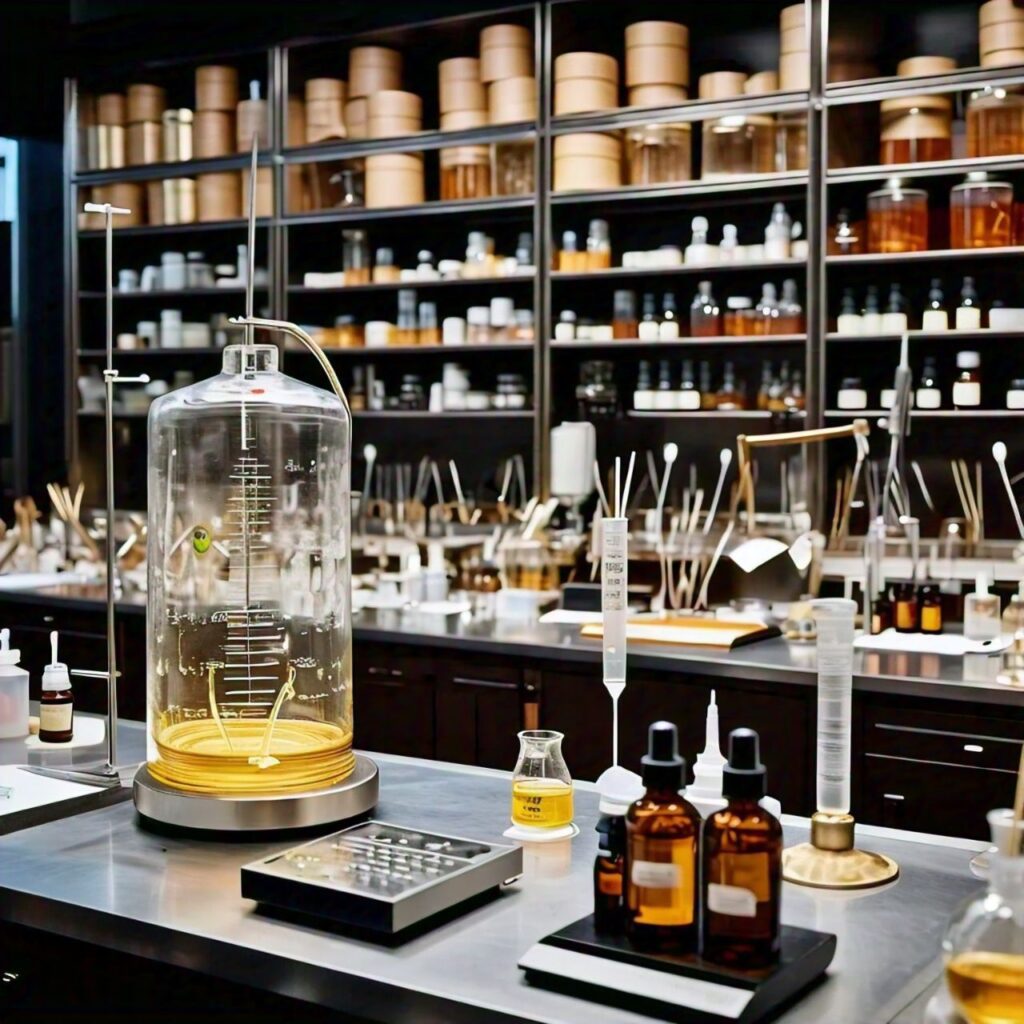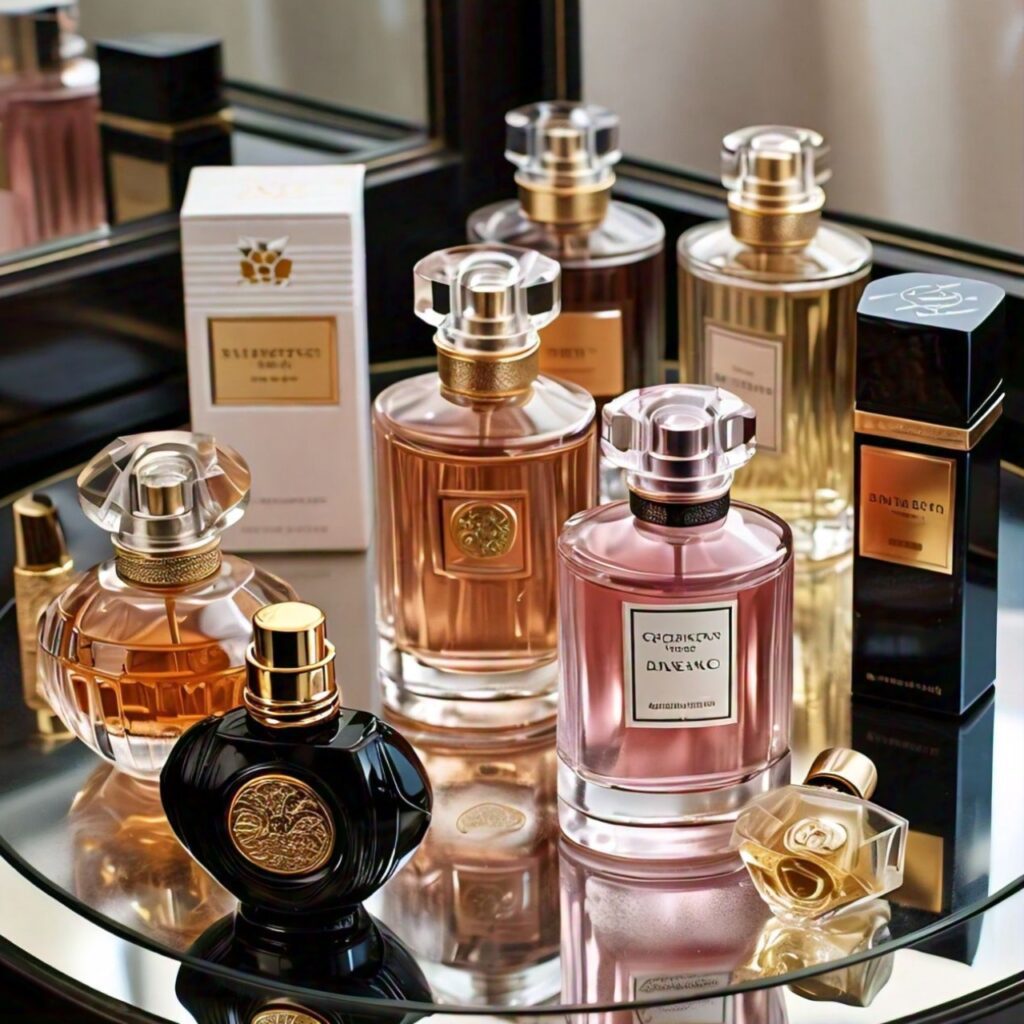When you read the fragrance descriptions at V Brand Gallery, you may have noticed some commonly used terminologies. In this blog, I have shared a mini glossary for you.

What is a Perfume?
Before we begin with terminologies, let’s know what perfume is. A perfume is a substance that leaves a pleasant smell when emitted and diffused.
What is a Parfum?
Perfume and parfum look similar. But these terms are different. A parfum is a strong perfume that has a substantial percentage of fragrance ingredients.
Concentration
Concentration is related to the percentage of fragrance ingredients present in a perfume. Perfumes are classified as eau de parfum, eau de toilette, eau de cologne, eau fraiche, extrait de parfum, and others based on the concentration.
Designer Perfumes
Designer fragrances are typically created by prominent designer brands. Prices can vary. Designer fragrances are often available in various forms, including eau de parfum, eau de toilette, colognes, body mists, and others.
Tom Ford is a renowned fashion brand. However, its Oud wood fragrance is one of its bestsellers.
Versace is well-known for its bags, accessories, and perfumes. And Gean Paul Gaultier’s fragrances are luxurious and long-lasting.

Niche Perfumes
Niche fragrance brands typically create fragrances only. Unlike designer brands, niche perfumes focus on fragrance creation. Niche perfumes are highly loved because of their unique ingredients, amazing compositions, fabulous longevity and sillage, incredible artistic quality, and enticing aromas.
Mark Des Vince is a niche perfume brand that creates perfume oils, perfumes, body mists, and other types of fragrance products.
Longevity
Longevity is the duration a perfume lasts on your body and clothes. For instance, Eau de parfum can last more than 5 hours, whereas a cologne can last up to 3 hours.
Olfactory Fragrance Family
The fragrance families are the categories used to understand what a perfume is likely to smell like based on what it contains. For example, members of the floral family would mostly use flowers as their ingredients, which contributes to their classification.
In comparison, those in the woody category present the kinds made using woody or forest-like-smelling raw materials.
Layers are combined to give perfumes a complex smell. The layers in which perfumes are made are called notes. Notes combine to make an overall fragrance.
Top Notes
These are the first smells that hit you right after you spray the perfume. They are fresh and light and, therefore, constitute the first impression of the perfume. Yet, they evaporate very quickly, usually for just a few minutes to one hour.
Middle Notes
When the top notes evaporate, the middle notes take their place. These are also known as heart notes because they act as the heart or core of the perfume’s fragrance.
The middle notes are usually more mellow and last a few hours. As the perfume remains on the skin, it slowly spreads into the base notes.
Base Notes
The base notes represent the final layer. They are generally the richest and heaviest scents of the perfume, hence giving it immense lasting power.
Base notes usually stay on one’s skin for up to 24 hours and can be felt after days. They provide a deep, enduring foundation that supports the lighter top and middle notes.

Accords
Think of an accord as a symphony in a perfume. It can be best described as a harmonious ensemble of different notes mingled to form a whole, just like musicians playing together are heard as a chord.
Likewise, perfumers blend different scents to bring balance and appeal to their creations.
Dry Down
The expression “dry down” describes the time when the opening blast of top notes blows off, leaving the base notes on your skin.
These deeper and longer-lasting bottom notes will linger on your skin for many hours, giving your fragrance a consistent and true image. They form the backbone of your fragrance, offering it tenacity and depth.
Sillage
The word “sillage” originates from French and literally translates to “wake,” in the sense that it leaves behind a boat on the water.
In perfumery, however, it refers to the characteristic scent trail that a fragrance leaves behind as it gradually evaporates into the air. A perfume with strong sillage allows others to smell the fragrance that the wearer was wearing previously.
Projection
Projection is basically like sillage but focused on how far the scent will reach others around the person. It refers to the reach or projection of the fragrance.
If you have ever smelt someone’s perfume from across the room, then you know projection does exactly that. This creates a fragrance that is not easily forgettable since it continues to project around the person.
Layering
Layering is a way to increase the scent experience through many scented products. For instance, using a scented body lotion would permit him or her to apply the same matching perfume.
This method of use, which can be used to increase the general fragrance intensity, also allows the fragrance to stay on the body for a long time during the day, gradually exposing different layers of it.


https://shorturl.fm/6539m
https://shorturl.fm/6539m
https://shorturl.fm/68Y8V
https://shorturl.fm/XIZGD
https://shorturl.fm/XIZGD
https://shorturl.fm/YZRz9
https://shorturl.fm/0EtO1
https://shorturl.fm/Kp34g
https://shorturl.fm/fSv4z
https://shorturl.fm/DA3HU
https://shorturl.fm/Xect5
https://shorturl.fm/TDuGJ
https://shorturl.fm/JtG9d
https://shorturl.fm/47rLb
https://shorturl.fm/f4TEQ
https://shorturl.fm/ypgnt